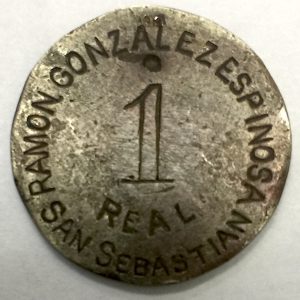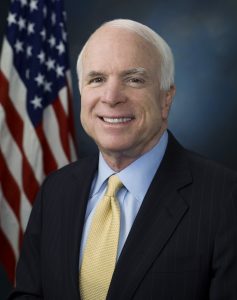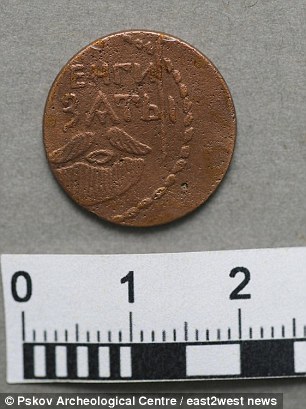BREAKING NEWS: U.S. Mint to Continue Morgan and Peace Program in 2022
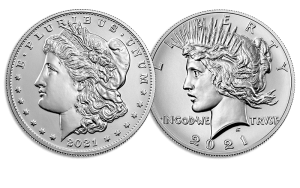 The U.S. Mint is currently holding a numismatic press availability via conference call. During the call, the U.S. Mint announced that they plan to continue the Morgan and Peace dollar programs in 2022 and beyond.
The U.S. Mint is currently holding a numismatic press availability via conference call. During the call, the U.S. Mint announced that they plan to continue the Morgan and Peace dollar programs in 2022 and beyond.
Although the products have not been finalized, it is possible that there may be different finishes, such as reverse proof, and additional products options including the production of the coins at other mint facilities.
Stay tuned for more from the U.S. Mint’s press availability.
Weekly World Numismatic News for September 9, 2018

The ‘Discovery’ coin, encrusted with rare pink diamonds, was created by the Perth Mint. (Image courtesy of The Business Times)
Modeled after the Holey Dollar, Australia’s first coin, it features four 1.02 karat pink diamonds mined in Western Australia. The center of the holey coin is included as part of the set. For the record, the coin as a reeded edge.
Perth Mint officials said that the coin, worth A$2.48 million (US$1.76 million), was created to “meet growing demand for high-end collectables from the ultra-rich.” It will be sold at auction with expectations that the buyer will be from Asia or the Middle East.
This is not the first time the Perth Mint has made a gimmick coin. In 2011, they created the Australian Kangaroo One Tonne Gold Coin. The coin was made using one metric tonne (2204.62 pounds) of .9999 fine gold, the coin measured 80 centimeters (31.5 inches) in diameter and 12 cm (4.72 inches) thick. Also with a reeded edge.
What is the point of making a coin like this?
Aside from extracting money from someone whose pocketbook can match his ego, is there a good reason to make these coins?
Of all of the questions as to whether what the U.S. Mint does is good for the hobby, where does this gimmick rank in comparison?
And now the news…
The platinum producers finally appear to be making headway with the SA government on the introduction of a platinum coin judging from recent comments made by Minister of Mineral Resources Gwede Mantashe Mantashe is currently in Perth, Western Australia where he addressed the Africa Down Under conference on August 29.  → Read more at miningmx.com
→ Read more at miningmx.com
Finance minister Nhlanhla Nene has published the official designs and specifications for the 2019 Natura coin series. The series will focus on the Cradle of Humankind and features a number of hominid discoveries which were made in South Africa.  → Read more at businesstech.co.za
→ Read more at businesstech.co.za
From today you will be able to pre-order a limited number of the newly minted Armistice Day coin for delivery in October, right in time for Armistice Day. The new coin is a legal tender, coloured, circulating 50c piece.  → Read more at scoop.co.nz
→ Read more at scoop.co.nz
Everyone knows how the old saying about comic book collectors goes: there’s one born every minute! So there should be no shortage of fans intrigued by the latest offering from the Royal Canadian Mint.  → Read more at bleedingcool.com
→ Read more at bleedingcool.com
Sydney AUSTRALIA has minted a gold coin encrusted with rare pink diamonds worth A$2.48 million (S$2.45 million) to meet growing demand for high-end collectables from the ultra-rich. The 2-kg treasure, which depicts a sailing ship, a gold prospector and boab trees found in Western Australia, is considered legal tender and will be sold to the highest bidder.  → Read more at businesstimes.com.sg
→ Read more at businesstimes.com.sg
Archaeologists in Sweden have discovered a gold ducat from early medieval Venice in Elleholm, a once thriving port that has now entirely disappeared.  → Read more at thelocal.se
→ Read more at thelocal.se
While coins may just be cheap change to some people, others like Jack Zillion and Dennis Witter see them worth much more.  → Read more at centralillinoisproud.com
→ Read more at centralillinoisproud.com
It’s been a busy summer for construction in Dawson City, Yukon — which means it’s also been busy for the territory’s archeologists.  → Read more at cbc.ca
→ Read more at cbc.ca
Despite the advent of credit cards, cryptocurrencies and other forms of online money, coins and paper still remain relevant  → Read more at usatoday.com
→ Read more at usatoday.com
It clearly communicates the notion that the private sector does the monetary system beautifully  → Read more at forbes.com
→ Read more at forbes.com
A token trip to Spain then to Venezuela
Now that I am running a collectibles business, I see a number of interesting items coming into the shop.
Last week, someone came into the shop with items that she wanted to sell in order to downsize prior to moving. One of the items was a small plastic bag of foreign coins. The bag contained a lot of low-value base metal coins that would trade for under one dollar from a dealer’s junk box.
Although I do not keep a large inventory of coins, I have a basket I fill with foreign coins for anyone who wants to look through them. I will sell the coins for 25-cents each even if they are worth more. When parents come into the shop with their children, I will let the kids pick out a coin. I challenge them to go online and learn what they can about the coin.
Sometimes, my assistant and I will look through the basket for something interesting. While my assistant is not a collector, she knows I am and looks for specific items I am looking for (more on that another time) and anything that looks interesting.
After moving furniture in the warehouse, I returned to my desk and found a small pile of coins. Some were part of the coins I was looking for and a token with the date of 1895. What is this coin?
- Obverse of a token from Hacienda El Altar and La Caridad. The plant in the center is likely a cane that was popular in the region.
- Reverse of a Hacienda El Altar and La Caridad token declaring they were owned by Ramón González Espinosa from San Sebastián and is worth 1 Real.
On the obverse and above the date is a tree. The legend around the coin says “EL ALTAR, LA CARIDAD.” On the reverse, it gives the denomination of “1 REAL” and the legend says “RAMON GONZALEZ ESPINOSA” and “SAN SEBASTIAN.” Immediately, I think this is a Spanish coin.
San Sebastián is a coastal city in the Basque region of northern Spain close to the French border. Although there is evidence of human settlement from at least 24,000-22,000 BCE, the earliest recorded evidence dates to 1014 and the monastery of St. Sebastián.
But there was no reference of a 1 real coin being issued in the region in the late 19th century or anyone in the region named Ramón González Espinosa.
Who was Ramón González Espinosa? Trying an Internet search of that name finds people with that name in California, Texas, and elsewhere around the world. Searching for Espinosa and San Sebastián also lead to a lot of irrelevant results.
Next was to figure out what El Altar and La Caridad represent. El Altar is “The Alter” in Spanish and La Caridad translates to “The charity.” Could this have been a token used to try to raise money in Spanish speaking country other than Spain?
Just to see what would happen, rather than using google.com, I went to google.com.mx, the site that serves Mexico and Latin America. I entered the information for all of the legends and searched. When too many items came up and my rudimentary Spanish found that they were irrelevant, adding quotes around each phrase lead found an interesting page.
On a blog that is written by a Venezuelan numismatist, there was an article with an image of the same token. Using translation software, I was able to obtain enough information to learn more about the token.
During the late 19th century, Venezuela was undergoing a financial crisis that caused a severe coin shortage. The situation became so bad that the haciendas, plantations in Venezuela, could not pay their workers. To help solve the problem, hacienda owners would create their own tokens to act as promissory notes. They would pay their workers using these tokens. When coins were available, the hacienda owner would pay the merchants.
These tokens circulated as money throughout the region.
The token we found was from the Hacienda El Altar and La Caridad, both were the properties of Ramón González Espinosa. Espinosa’s properties were located in Aragua State
The haciendas were in San Sebastián de los Reyes (Saint Sebastian of the Kings) in Aragua State. The town is located on the Guárico River that leads to the Caribbean Sea. El Altar and La Caridad were livestock farms.
It is unusual for the names two haciendas to appear on a single token. According to references about other tokens from this era, when the same person owned multiple haciendas they had tokens made for each of their properties to distinguish the accounts from each other. Since there were no other references for tokens with more than on hacienda, it is not known as to why Espinosa created only one token.
Most tokens from this era were made using a copper-nickel alloy that ranged from 40-60 percent nickel. Most were thin discs and had different shapes. Hacienda tokens ranged in value from ½ Real to 5 Reales. Tokens from Hacienda El Altar and La Caridad were issued in ½, 1, 2, and 4 Reales.
The Venezuelan government continued to have a difficult time producing enough coinage. After Cipriano Castro seized the government in Caracas, he contracted with the Mexico City Mint to produce low denomination copper coins. In 1902, Venezuelan government contracted with the U.S. Mint to produce lower denomination silver coins.
Slowly, there was enough of a coin supply that it ended the need for hacienda tokens. But they continued to circulate because hacienda owners used it as a way to control their workers. When Juan Vicente Gómez overthrew Castro, who left Venezuela in 1908 for medical treatment in Germany, he instituted a rule to end the circulation of these tokens by ordering the hacienda owners to buy back the tokens using state currency.
It is estimated that over 10,000 tokens were once in circulation. After the order was given to redeem the tokens most were melted and used for other purposes.
Although it is rare to find one, they are not worth much in the numismatic market. However, finding one allowed me to learn more about its origin, hacienda tokens, and how the United States helped in ending this practice.
In other words, yet another reason why numismatics is a fun hobby!
August 2018 Numismatic Legislation Review
McCain’s story of his stay at the infamous Hanoi Hilton has been long discussed and written about in the books he authored. He served as legislative liaison for the Pentagon to Congress before being elected to the House of Representatives from Arizona’s First District in 1982. After two terms in Congress, he ran for the seat that was being vacated by the retiring Barry Goldwater. McCain would go on to win five elections to the Senate before his passing.
John McCain was a true American Hero. What made him a bigger hero was that he was imperfect and stood up when he was wrong and took ownership of his mistakes. Something the colleagues he leaves behind in Congress should learn from.
To add a numismatic theme, military orders and medals are part of exonumia. To honor the late John McCain, here is a list of medals he earned during his service in the U.S. Navy:
- Silver Star Medal
- Legion of Merit with Combat “V” device and Star
- Distinguished Flying Cross
- Three Bronze Star Medals; all three with Combat “V” device and the second two with stars
- Two Purple Heart Medals; the second with a star
- Meritorious Service Medal
- Two Navy Air Medals; the first with a bronze star and the second with a Strike/Flight numeral “2” device
- Two Navy Commendation Medals; both with Combat “V” device
- Navy Combat Action Ribbon
- Navy Unit Commendation
- Navy Meritorious Unit Commendation
- Two National Defense Service Medals; the second with a star
- Armed Forces Expeditionary Medal
- Three Vietnam Service Medals; the second and third with stars
- Republic of Vietnam National Order of Vietnam—Awarded by the South Vietnamese government, it was the highest honor that can be bestowed on a non-military official by South Vietnam
- Republic of Vietnam Gallantry Cross—Awarded by the South Vietnamese government for valor in combat
- Republic of Vietnam Campaign Medal with Device—Awarded by the South Vietnamese government for wartime service
A Combat “V” device is an award for Valor. These are given to those who earned the award for their service during battle. Stars are awarded when a medal is awarded more than once. The Strike/Flight numeral “2” device is awarded to service members whose award was earned during aerial combat.
As for the legislative update, August in Washington, D.C. is very hot and humid. Those of us who live in the area dread this month. Aside from the weather, it is the slowest month for everything. On the plus side, it is the month where we see less severe traffic as residents flee the area for their last summer fling. All that ends at the end of the month when it becomes time to get ready for the school year.
Congress usually takes off in August. If they are not campaigning for reelection, they are spending time at home. This year was different. There were a few floor sessions but the committees seemed to have a few hearings. While it is normal for committees to meet when there are no floor sessions, it is unusual for it to happen in August.
Other than having all members of Congress in town for John McCain’s funeral, there was no numismatic legislation to report for this month. With mid-term elections predicted to be contentious, it will be interesting to see if Congress will tackle anything that is not necessary between now and Election Day.
Weekly World Numismatic News for September 2, 2018
There is always something in numismatics that can be used to teach us about history. This past week it was reported that Russian archeologists found a rare “beard kopek.” It was a coin that men had to buy if they wanted to remain unshaven under the rule of Peter the Great.
- Obverse of Beard Tax copper token issued under the reign of Czar Peter the Great.
- Reverse of the Beard Tax token. Note the off-center strike on this hammered token.
Peter rose to power at the age of 17 in 1689, but the arcane succession rules of Russia did not allow him to actually rule until his mother died in 1694. Then, he had to be co-ruler with his brother Ivan V until Ivan died in 1696. That is when Peter took over.
Once Peter became the sole czar he implemented sweeping reforms to modernize Russia. He thought that in order to become a power similar to those of Western Europe, Russian society had to evolve. Using western advisors and his command of the military, he forced reforms on the country including violently suppressing uprisings by those who did not agree with him.
To enforce his idea of modernization, he introduced western dress to his court and required all government officials to adopt this more modern style of dress. Robes and beards were no longer accepted under Peter’s rule. In order to enforce his idea, Peter began to levy taxes on people who would not comply. If you wanted to keep your beard you had to pay a tax. Once you paid a tax you would be required to carry around a token saying that you paid the tax.
The copper token found in Russia was one of those beard tax tokens. It has an image of a beard and mustache with the words “Money Paid” (in Russian) surrounded by a beaded border. If you wanted to keep your facial hair, you paid the tax and had to carry around the token as proof.
Reports claim that this is only the second known Beard Tax token to exist with the other one being in The State Hermitage Museum in Saint Petersburg, Russia. However, a silver version of the token was sold by Heritage Auctions in September 2017 as part of the Long Beach Expo World Coins Signature auction. The hammer price for that token was $3,000.
Even if there were two more found, it would still be a rare token!
And now the news…
Aaron Coulson was given the silver coin in a Sutton Coldfield pub – and thinks it's worth at least £100  → Read more at birminghammail.co.uk
→ Read more at birminghammail.co.uk
In 1698, Tsar Peter the Great of Russia, as he would come to be know, was waging a war on beards. In an attempt to modernize his empire and make it more like the west after spending years exploring Europe in disguise, Peter instituted a tax on facial hair.  → Read more at popularmechanics.com
→ Read more at popularmechanics.com
The United States Mint has issued an open call for artists to design the nation’s coins and medals as part of its its Artistic Infusion Program. The government is particularly interested in artists who will “bring innovative perspectives and utilize symbolism in their work to clearly and evocatively convey subjects and themes,” according to the program’s press release.  → Read more at news.artnet.com
→ Read more at news.artnet.com
AUGUSTA, Maine (WABI) – Attention all Maine artists: The Maine Bureau of Veterans' Services has an important job for you. They're looking for an artist to design a coin for post-Vietnam War and peacetime veterans.  → Read more at wabi.tv
→ Read more at wabi.tv
A MAN uncovered a horde of Roman coins buried in farmland. Allan Hughes, of Wrexham, found five silver Denarii coins dating back nearly 2,000 years while out searching with a metal detector on arable land in Cockshutt, near Ellesmere.  → Read more at leaderlive.co.uk
→ Read more at leaderlive.co.uk
The South African government is considering a range of initiatives to increase the demand for platinum-group metals (PGMs), including the development of a Mandela Platinum Coin. The proposal to develop a Mandela Platinum Coin is based on the international success achieved by the Kruger Rand, South Africa’s Mineral Resources Minister Gwede Mantashe said at the Africa Downunder conference, in Perth.  → Read more at miningweekly.com
→ Read more at miningweekly.com
A First Century silver Roman coin uncovered on land in Shropshire has been declared treasure trove at an inquest.  → Read more at shropshirestar.com
→ Read more at shropshirestar.com
LOOK BACK: A frank discussion about China and counterfeits
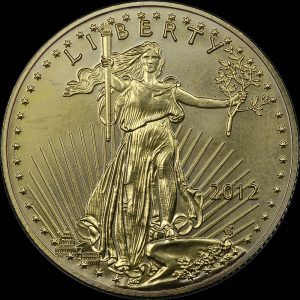
Front of a counterfeit 2012-dated American Eagle $50 denomination one-ounce gold bullion coin. (Photo courtesy of Numismatic Guaranty Corporation.)
Every coin minted by the U.S. Mint is legal tender and are legally an instrument of the government. Although the Trade dollar was demonetized in 1876, it was remonetized as part of the Coinage Act of 1965 making it legal tender (31 U.S.C. § 5103) for trade in the United States. This means that it is legal to spend an 1873 Trade Dollar for $1 of goods and services even though the coin is worth more than its face value.
To protect its currency, the United States has anti-counterfeiting laws that makes it illegal to counterfeit the nation’s money and use in commerce. For collectible coins and currency congress passed and has since updated the the Hobby Protection Act (15 U.S.C. § 2101 et. seq.). These laws protect the money supply when it is a collectible and not an instrument of commerce.
In the United States, laws are cumulative. Once passed, they remain the law until repealed or declared unconstitutional by the courts. This is not the way in many other countries. In many countries, when a new government takes power they are given the authority to rewrite the laws. It is expected to happen within authoritarian governments but it is common in many parliamentary democracies.
The People’s Republic of China has been run by the Communist Party since 1949. Their rules and laws have changed significantly when the Communist Party came into power. One of their first rules was to demonetize the money produced by the Republic of Chin and issued renminbi, the “people’s currency.”
Since then, it has been the practice of the chairman of the Communist Party to demonetize non-current issues of coins and currency as part of their economic control policies. Based on the current Chinese economic system, all coins struck since 1955, the first issued under the current government, are legal tender. Currency printed since 1999, the fifth series is the only legal tender notes. Any other coin or currency note has been demonetized.
Under Chinese anti-counterfeiting laws, it is illegal to duplicate any legal tender coin or currency note for any reason. However, since coinage from previous regimes is no longer legal tender, it is legal to strike coins with those designs. Chinese laws do not recognize the collection of these coins as a market to protect.
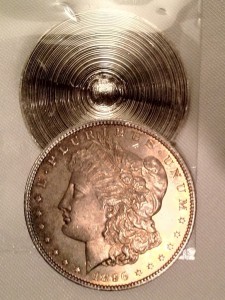
An example of a Morgan Dollar cut in half to match a date with a mintmark to have the coin appear something it is not. Coin was in a counterfeit PCGS slab and caught by one of their graders.
Chinese law does not recognize the perpetual legal tender status of every coin issued. Chinese law also recognizes that counterfeiting current issues of other countries is also illegal because someone could try to use the coin in commerce where it is legal to use foreign currency. This means that in China, it would be illegal to reproduce a presidential dollar or Washington quarter, but producing Morgan dollars or a set of 1921 Walking Liberty half-dollars is legal in China because these are coins no longer issued in the United States.
When China is asked to assist the United States to stop the counterfeiting of coins, China does not recognize that its people are doing anything wrong. The coins are no longer being made, they are not in circulation, and their laws allow people to make copies of these coins. The only laws that China has regarding collectibles are laws protecting antiquities and cultural properties. This means that you cannot duplicate a Ming Dynasty vase and try to pass it off as real but it is legal to reproduce a Rembrandt masterpiece since he is not Chinese and his work was not made in China.
A trade attorney that was originally consulted for this article confirmed that when it comes to these issues, Chinese law is very protectionist. The claim is that they follow their laws consistently regardless of outside circumstances and they refuse to make exceptions citing the complication with enforcing their laws in a country with a population of more than 1.3 billion people.
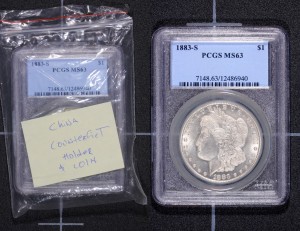
PCGS representatives showed Congressmen counterfeit U.S. coins in counterfeit PCGS holders during their recent meetings in Washington, DC. (Photo courtesy of PCGS.)
The Chinese government has no incentive to help the United States or any other country fight counterfeiting in what is perceived by the Chinese as a small market problem. To put the resources necessary into what looks like a petty crime for selling inexpensive, non-circulating duplicate coins that are within Chinese law to manufacture is considered not worth their resources.
While there is anecdotal evidence that the Chinese government knows about the counterfeit trades and some officials informally support the efforts because they get kickbacks, official Chinese policy denies there is a problem.
A lot has been written about the nature of the relationship between the United States and China since President Richard Nixon’s trip to China in 1972. Neither side trusts each other nor does neither side believe each other. Today, the United States decries the Chinese for buying too much of our debt, allegations of spying, industrial espionage, and cyber crimes. The Chinese say that the United States is trying to bully the world and that these naysayers are making up the stories to scare the world into following them. The United States talks about civil rights violations within the Chinese border and the Chinese government tells the United States to mind its own business.
The greater opening of markets between the country and the increase in popularity of bullion coins has made the Chinese Panda a popular coin amongst collectors and investors. Those of us who buy these coins know that even with the production increases since 2010 new issues continue to command a premium greater than other bullion coins.
While the Chinese are happy to sell coins and be the factory to the United States, there remains an underlying tone of political and commercial hostility between the nations. A trade attorney said that the Chinese would rather keep the relationship to business between the countries that the United States should stay out of China’s domestic policy. It was explained that the Chinese central government was upset over how the United States passed judgment over companies in their high tech electronic manufacturing sector because these companies are doing better and are safer than other Chinese manufacturers. To the Chinese government, it is not a problem if a few workers die for whatever reason. There is an ample supply from the population to keep the plants running.
These are the values of the Chinese government. Whether you agree with them or not, Communist Party officials will resent anyone telling them how to manage their domestic affairs. They want advice about how to treat their citizens as much as the United States wants similar advice from China.
There is no incentive for China to stop the manufacture of counterfeit collectible coins.
It is not against Chinese law for these people to manufacture coins that are no longer in production. Chinese people who are manufacturing these coins are working in China and many employ other people. It means there are fewer people relying on assistance the Chinese government provides. Since they now have incomes, it provides revenues for the tax coffers.
When a United States trade representatives negotiate with their Chinese counterparts, it gives the Chinese a chance to lecture the United States how they resolved the counterfeiting issues which leads to a discussion on currency handling and management, which is a sore subject in the United States since the United States questions Chinese monetary policies.
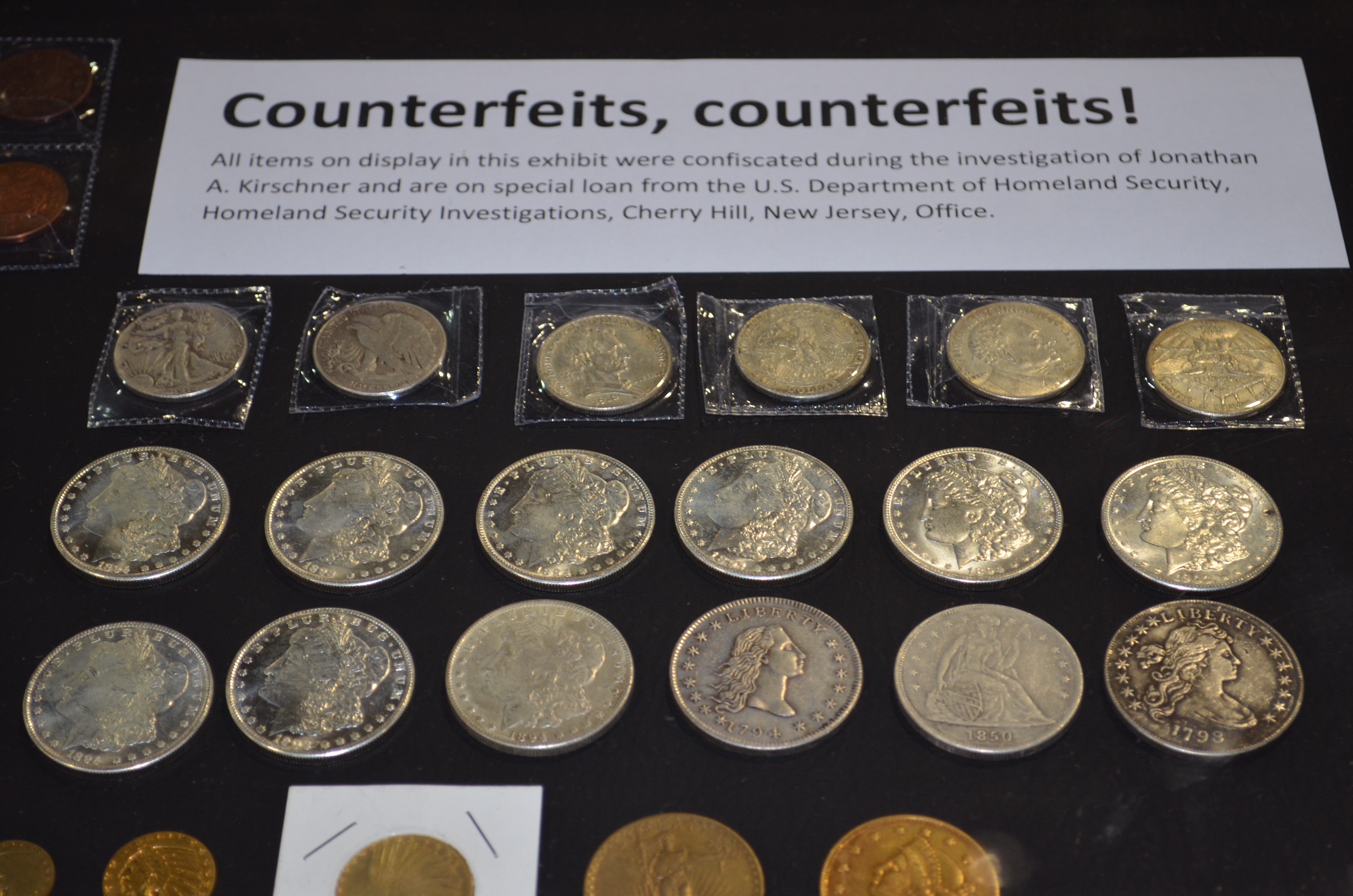
A portion of the exhibit of confiscated counterfeits on special loan from the Department of Homeland Security displayed at the 2018 World’s Fair of Money® by ICTA/ACTF.
Finally, it gives China a measure of moral superiority against the United States. After all, China figured out a way to prevent the impact of counterfeiting of older currency, why can’t the United States do the same?
China has no incentive to help the United States to solve a problem that they perceive does not exist. It is up to the United States to resolve these issues. This is why the industry promoted the Collectible Coin Protection Act (Public Law No: 113-288) so that law enforcement has an additional tool to use to help prosecute handlers of counterfeit coins in the United States.

